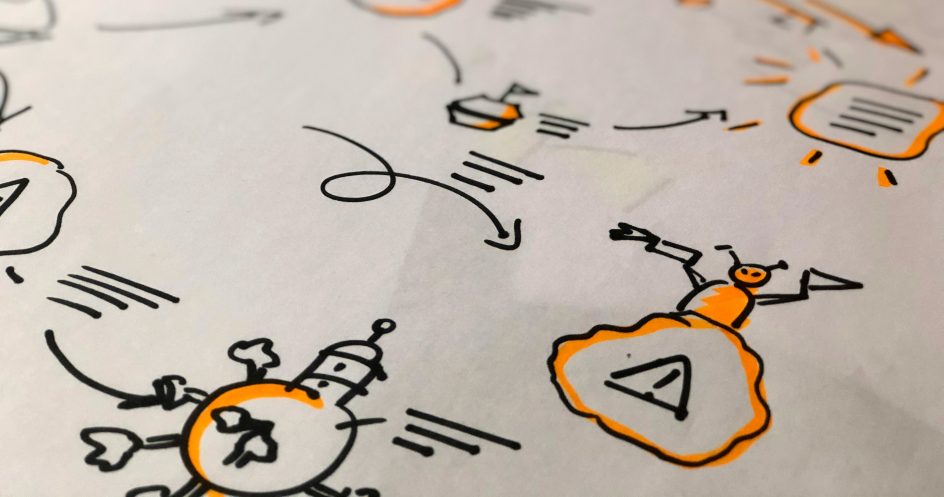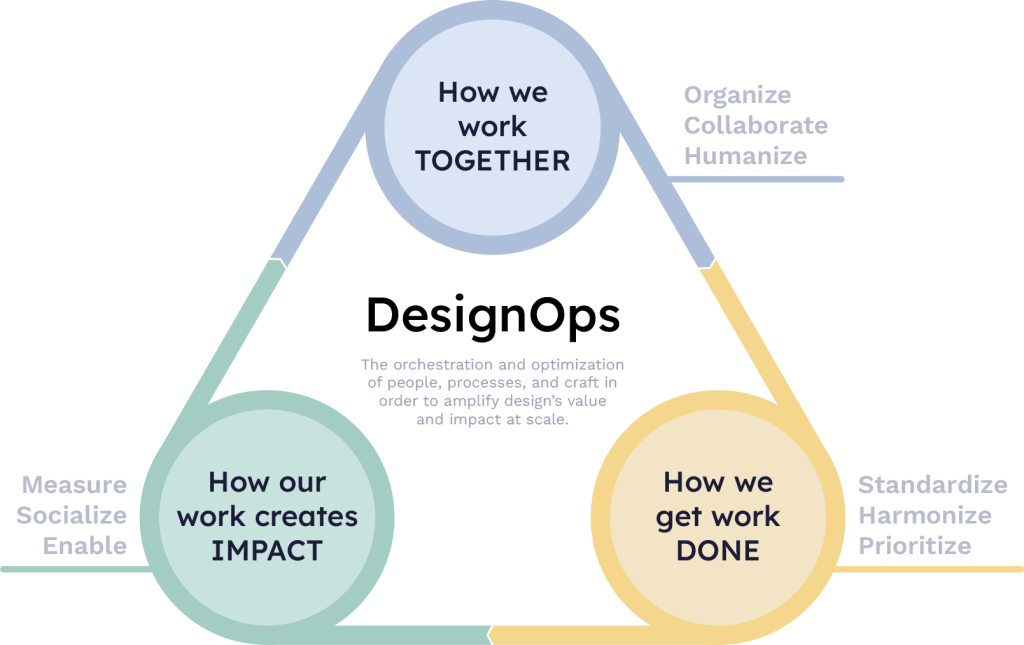
DesignOps guides designer growth
The DesignOps (abbreviation for design operations) framework is a relatively new topic among design professionals. Although its definitions vary from source to source, the general contents garner a comprehensive set of issues for design team orchestration. A big name in the usability field, Nielsen Norman Group (NNg), has compiled its DesignOps model based on a survey of design professionals.
The main themes in NNg’s model are How we work together, How we get work done, and How our work creates impact. Together, these themes form a stable baseline for any design team willing to improve its work. The best way to approach team evolution is to identify the elemental development topics and investigate possible solutions. NNg’s DesignOps model covers 27 topics, such as team composition, design process, consistent toolsets, and success stories.

The tricky baby steps
Approaching a complete framework can feel daunting, given that most DesignOps journeys last several years. Each team should come up with their strategy for team development. The design teams can make DesignOps more accessible by selecting critical development topics and concentrating only on them. For sure, DesignOps is a handy gateway to design coordination, but its true ingenuity lies in being a great conversation starter.
Although all design teams are different, one thing is in common with each one: every team has designers. This indicates that each team should touch upon at least the topics supporting designers’ professional growth. These include role definition, career development, and skills training, among others.
DesignOps’s true ingenuity lies in being a great conversation starter for design coordination.
Boosting designer expertise
Designers can elevate their expertise by adopting supporting roles in addition to their original skillset. NNg’s investigation into design team compositions has led to the recognition of a few support roles from which design teams can benefit. A DesignOps manager is a vital support role for any evolving design team. Other roles, such as design producer and research specialist, can support project delivery and maintain standardised working practices.
Each team needs leadership as well as designers who are deeply specialised in their craft.
Of course, each team determines its own composition, but having a wide range of different skills can prove helpful over time. One practical exercise is to create skill maps for individual designers in a radar chart format. After this, the maps are overlaid to reveal possible skill gaps in the team’s full capability. The skill mapping exercise is a handy tool for accentuating possible growth directions for designers and stressing skills required from new hires.
Branching career paths for different aspirations
Designers can find themselves in a situation where their organisation expects them to grow as leaders and offers only a one-track career model. Separating subject matter experts and organisational leaders into different career tracks can open unexpected growth possibilities for rising talents. In the middle of the artisan’s and manager’s tracks is space for in-between roles such as project managers.
The branching paths recognise managers and deep experts as necessary competencies, providing attractive career prospects for domain experts. The two-tier model is particularly effective in the DesignOps environment. Each team needs dedicated leadership and designers deeply specialised in their respective crafts. A company may not need design leadership, but it needs leadership-minded people who can manage their work and even let others grow as leaders.
A company may not need design leadership, but it needs leadership-minded people who can manage their work and even let others grow as leaders.
Another aspect of professional growth is learning by doing, which is especially prevalent in design work. Designers learn in projects when using the tools of trade. The adoption of new tools and practices is easier in teams, stating the meagre fact that a functional team with proper working methods and standardised practices is an important support factor for professional growth.
Although these development topics are part of any organisation’s work, it’s fun to think they all stem from the DesignOps framework. Design work existed long before DesignOps emerged, so none of the underlying topics are entirely new. It is still consoling to know there is a guideline to follow when an organisation needs further evolution. Serious discussion about working methods sheds light on latent issues and empowers designers by revealing growth options.
Design work existed long before DesignOps emerged, so none of the underlying topics are entirely new.
In the Master’s Thesis of the Degree Programme in Service Design, the significance of DesignOps was examined for the development and management of designers’ work contribution. From the perspective of a company’s success, it is important to identify the characteristics of different team members and how they can be best utilized. DesignOps can also promote a designer’s career development.
Elo, J. (2024). Using DesignOps framework to lead design work. Master’s Thesis. Turku University of Applied Sciences.
Picture reference: Unsplash